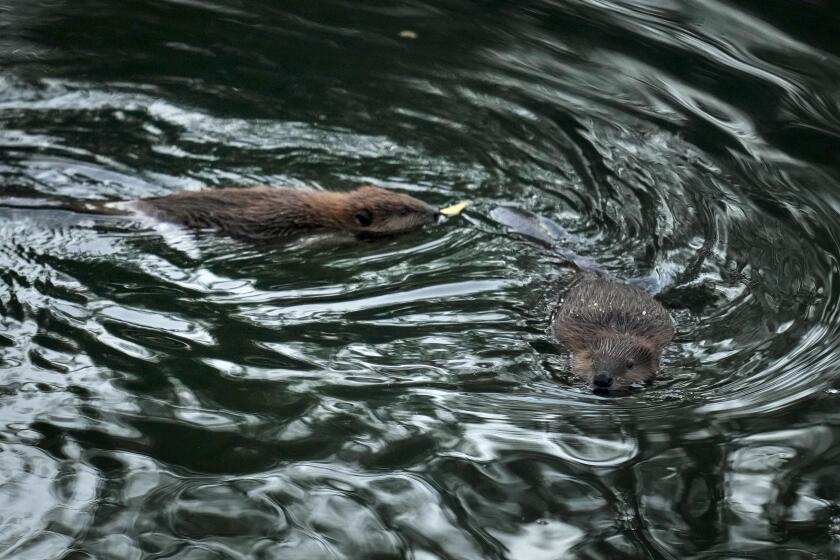The nature of disaster
When the air in Southern California takes on an unnerving yellow cast, it usually means disastrous wildfire. People miles away from the nearest blaze can still sense the oppressive eeriness of a crisis in the distance. The region is suffused with yellow air and crisis right now, so much that it’s hard to know where we should direct most of our worry, sympathy and aid. Malibu at first, then San Diego. What about Lake Arrowhead?
As common as fire is to autumn’s parched scrub and arid gale winds, it never feels natural to the people who are chased from their houses at the intersection of civilization and wildlife, not knowing as they run whether they’ll ever live in those familiar and dear spaces again.
When the fires are over, the discussions will begin. Did we clear enough brush, create enough fire breaks? Did we short ourselves on the fire budget? Do power lines belong under the ground? Have we built too far into nature, too high in the canyons, too deep in the brush? Was this catastrophe inevitable, or the price of hubris?
And always: How do those firefighters do it? Plant themselves in front of the houses of people they’ve never met and set their faces toward the fire, endangering their lives and working to the point of exhaustion and beyond?
We’ll shake our heads at the people who resisted evacuating. It doesn’t matter how sure they are that they won’t be hit, or that they can single-handedly save their homes. They place an extra burden of rescue on those who are trying to get a bigger job done.
There will undoubtedly be lessons we can take from this fire season to minimize future losses, just as fire breaks and earlier evacuations -- lessons gleaned from disasters past -- have helped in some of these most recent fires. Even more certain, though, is that brush fires are a literal force of nature here. Brush thrives on occasional disaster. Old undergrowth chokes out new life; fires clear the ground and fertilize and freshen the soil. We know that even as we fight the flames and grieve over their aftermath. Southern Californians have chosen to live where wildness is still a visible, occasionally destructive and often awe-inspiring force.
We who live here learn to balance our qualms against the allure of wilderness -- or at least, between disasters, we grow practiced at ignoring the discomfort. As wildlife and settled life press up against each other ever more uneasily, we know that as much as nature threatens us, we can’t change that without destroying one of the things we love most about the place.
More to Read
Start your day right
Sign up for Essential California for news, features and recommendations from the L.A. Times and beyond in your inbox six days a week.
You may occasionally receive promotional content from the Los Angeles Times.





